We hope that each of you, our readers, will enjoy and appreciate this article we present about these 4 Marvelous Mammals of Madagascar. It was certainly our pleasure to gather the data for you. May it provide you with both education and increased awareness.
Certainly, these few species listed herein represent only a portion of the similar species in this location. It’s our belief, though, that they serve as excellent representations of the local members of this Class. Check out some of our other articles for similar marvels.
Lowland Streaked Tenrec
Lowland Streaked Tenrec Facts
- Leading off this article about these 4 Marvelous Mammals of Madagascar we give you the unusual creature known as the Lowland Streaked Tenrec.
- The informative term we’ve chosen to use herein serves as the most frequently used title for this highly distsinctive mammal. For the moment, it has no other broadly accepted general name. Though not unknown, that’s somewhat uncommon.
- Within the scientific community, though, it has another name by which it’s known. That, however is a term almost impossible for the majority of laypeople to pronounce. That’s because this marvel holds the technical moniker of Hemicentetes semispinosus.
- The animal received this tongue-twisting appellation due to the efforts of Jean Léopold Nicolas Frédéric, Baron Cuvier. He accomplished the first recognition of it as a separate and distinct species. He managed that noteworthy deed in the year 1798.
- Fortunately, the amazing Lowland Streaked Tenrec seems to be maintaining a stable and sufficient population base. That situation further appears to hold true throughout its native range. The IUCN therefore currently lists it as Least Concern on its Red List.
- It nevertheless faces some potential threats to its existence, at least. Many of these stem from the actions of mankind. Habitat loss due to deforestation tops that list at present. Looming large, though, is the ever-growing threat posed by climate change.
Lowland Streaked Tenrec Physical Description
Along with its distinctive appearance, the Lowland Streaked Tenrec developed as a comparatively diminutive animal. Adults attain an average length of head and body of about 6.5 in (16.5 cm). It also stays quite light, rarely exceeding 7 oz (200 grams) in weight.
It also stands out from related creatures in yet another manner. Unlike many mammals, it displays no notable degree of the physiological characteristic of sexual dimorphsim. Distinguishing the genders can therefore be difficult for the untrained observer.
Among mature individuals, body mass frequently varies quite significantly. This occurs without regard to gender. Overall, the species attains an average weight that ranges from 4.4 – 9.9 oz (125 – 280 g). Though rare, exceptional specimens do sometimes occur.
The snout of the Lowland Streaked Tenrec develops as elongated, while the tail appears vestigial. The head, back, and sides of the animal display a black shade, with yellow stripes. Meanwhile, the underbelly typically displays a chestnut brown and covered with soft fur.
The rest of the body is covered with numerous long, sharp quills. It’s also important to note that some of these develop as barbed and detachable, being used in defense. These develop most numerous on the crown of the head. It’s also the quills that are used for stridulation.
- Kingdom: Animalia
- Phylum: Chordata
- Class: Mammalia
- Order: Afrosoricida
- Family: Tenricidae
- Genus: Hemicentetes
- Species: H. semispinosus
Lowland Streaked Tenrec Distribution, Habitat, and Ecology
The Lowland Streaked Tenrec evolved as native to an extremely restricted section of the globe. Given its unique nature, where it lives likely comes as no surprise to many. That’s because it developed as endemic solely to the island of Madagascar, located near Africa.
Even there, though, it only appears in a limited section of this already constricted range. Presently, the mammal only lives on less than half the total area of the island. The zones it lives in roughly forms the approximate northern and eastern regions of the whole.
Like many related species, it displays decided preferences regarding its choice of habitat. In its case, the animal lives almost exclusively in sections composed of tropical rainforest. It also shows a fairly strong favoritism for lower altitudes, rarely dwelling at higher one’s.
Within these restrictions, however, it does show some flexibility, at least. On occasion, individuals manifest a fondness for splashing in shallow bodies of water, such as puddles. It also often makes its home in proximity to other bodies of water, such as ponds or lakes.
The Lowland Streaked Tenrec evolved as omnivorous in nature. It primarily consumes animal prey, though, especially earthworms. Other small invertebrates also serve as a food source. Yet it eats smaller quantities of various fruits on occasion, too.
The intriguing animal typically constructs long, shallow burrows in which to dwell. One often holds several families. These rarely reach more than 6 in (15 cm) beneath the surface, though. Its principal predators include the Fossa and the Malagasy Mongoose.
Black Lemur
Black Lemur Facts
- Next up in this compendium of 4 Marvelous Mammals of Madagascar comes the first lemur in the group, aptly-named Black Lemur.
- This remarkable creation of evolution most frequently goes by the descriptive common name for obvious reasons. Unlike the majority of animal species around the world, though, it presently has no other broadly accepted general title by which it’s known.
- Inside of the scientific community, however, it does have another name. That’s the technical appellation. Unfortunately, though, that’s somewhat difficult for the layperson to pronounce. That’s because it holds the official moniker of Eulemur macaco.
- It received that name due to the efforts of Carl Linnaeus. The esteemed Swedish Zoologist accomplished the first official recognition of it as a separate and distinct species. He managed that scientifically noteworthy deed in the year 1766.
- Experts previously believed two subspecies of the animal existed. Later research subsequently altered that belief, with two new individual species being recognized. The mammal nevertheless remains a fascinating creature on its own merits.
- Regrettably, the Black Lemur possesses a small population that seems to be continuing to decline. That unfortunate fact further appears to hold true throughout its range. Accordingly, the IUCN currently lists it as Critically Endangered on its Red List.
- It faces multiple threats to its continued existence as a species. Most of these stem from the actions of mankind. Its most immediate threats include deforestation and the exotic pet trade. It also now faces the looming danger posed by climate change.
Black Lemur Physical Description
The stunning Black Lemur quickly captivates those fortunate enough to encounter one, especially in the wild. It does so primarily due to its appearance though, not sheer size. That’s due to the fact that. like most of its kindred, it’s not an overly large primate.
Visually, it truly distinguishes itself sharply from its relatives. That’s because this creature displays one of the most extreme degrees of the physiological characteristic of sexual dimorphism of any primate. In its case, this trait usually manifests itself in appearance.
The fur of males of the primate typically display a predominantly black pattern of coloring to the fur. This understandably serves as the origin of the common name. Despite this, though, some individuals present a background consisting of a dark chocolate brown hue.
Meanwhile, the females generally develop a sharply different pattern of color. In the case of this gender, the background most often consists of several shades of brown. This typically forms a blending of light, medium chestnut, and even orange-brown on occasion.
Males of the Black Lemur also manifest large black tufts of hair on their ears. Yet the females show white tufts in the same location. The creature additionally separates itself from others of its kind in an incredible way. It’s the only primate other than man to have blue eyes!
Both genders present virtually identical features otherwise. The average total head-to-tail length equals roughly 38 in (96 cm). However, the lengthy tail actually accounts for more than half of that. In terms of mass, the intriguing animal rarely exceeds 5 lb (2.25 kg)
- Kingdom: Animalia
- Phylum: Chordata
- Class: Mammalia
- Order: Primates
- Family: Lemuridae
- Genus: Eulemur
- Species: E. macaco
Black Lemur Distribution, Habitat, and Ecology
Lamentably, the amazing Black Lemur evolved as native to an extremely limited section of the globe. That exact location won’t surprise anyone who knows much about lemurs, though. That’s because this species, like all of its relatives, lives in only one place on earth.
This remarkable creation of Nature, along with its related species, developed as endemic almost solely to the island of Madagascar. A few specimens also appear on tiny nearby islands. This places the entire species, and related one’s, near the continent of Africa.
Even within this small zone of habitation, this creature only lives on the extreme northern part of the main island. It also displays decidedly strong preferences regarding its choice of habitat type. It principally makes its home in regions of undisturbed tropical rainforests.
The animal nonetheless also displays some degree of adaptibility in this respect. A relatively small percentage of individuals choose to live in local tree farms, and even on farmland. Sadly, though, this frequently brings it into interaction with human beings.
The Black Lemur is active during both day and night periods. It mainly forages for its food at night, though. While technically omnivorous, plants form the majority of its diet. Fruit comprises roughly 87% of its diet. It also eats leaves, flowers, and the rare invertebrate.
It’s a highly social animal, as well. The majority of individuals tend to live as social creatures, in groups numbering somewhere between 7 and 10 individuals. These small groups additionally tend to follow a single female, with infighting rarely occurring.
Fossa
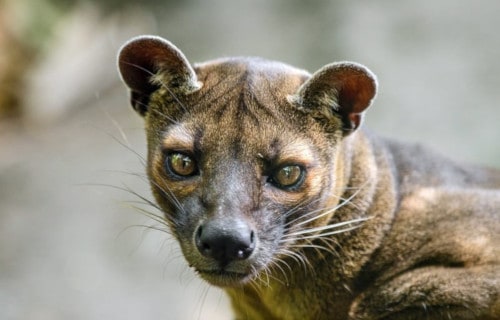
Fossa Facts
- Our third entry into this listing of 4 Marvelous Mammals of Madagascar, the Fossa, only lists there due to random selection.
- This highly fascinating mammal most frequently goes by the short, and somewhat confusing common name despite that. That’s true due to the unusual fact that this same term also represents the generic name of another species in the local area.
- Within scientific circles, however, it’s often known by its technical monniker. Like so many such terms, though, it’s fairly difficult for the layperson to pronounce. That’s because this distinctive creature holds the official title of Cryptoprocta ferox.
- The intriguing animal received that appellation due to the efforts of Edward Turner Bennett. The The British zoologist accomplished the first formal recognition of it as a separate and distinct species. That scientifically notable deed occurred in the year 1833.
- Presently, the population of the Fossa appears to be comparatively stable. Unfortunately, the density of those numbers seems to quite low. Given this situation, the IUCN currently lists the animal as Vulnerable on the organization’s Red List.
- It faces multiple potential threats to its continued existence as a species. Like most, many of these stem from the actions of man. Its most immediate peril consists of habitat loss. It also now faces the looming threat posed by climate change, as well.
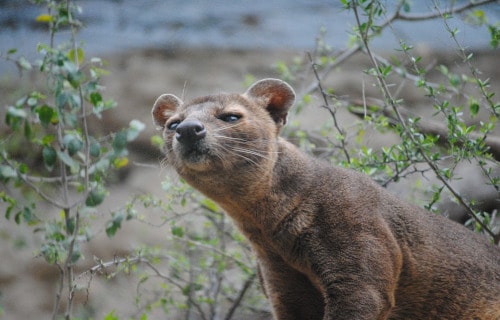
Fossa Physical Description
The fabulous Fossa represents a truly distinctive creation of Nature and evolutionary processes. Despite its definite feline-like appearance, though, it holds no relationship with cats. It developed similar traits independently, via a process known as convergent evolution.
Like many creatures, including felines, it displays a certain degree of the physiological characteristic known as sexual dimorphism. In its case, this trait manifests itself purely in terms of physical size. However, the gender-based difference generally remains slight.
Due to this attribute, males typically grow larger than females. These attain an average head-body length measuring between 28-31 in (70-80 cm). The tail grows quite long in relation to the body. This appendage reaches a mean length of 26-28 in (65-70 cm).
Females achieve approximately the same measurements as males, in this specific regard. The distinction occurs in terms of mass. Males usually average 14-19 lb (6.2-8.6 kg). Yet the females only average 12-15 lb (5.5-6.8 kg). These thus tend to present a slimmer shape.
Otherwise, the sexes of the Fossa present the same appearance. The fur develops as short and straight in nature. It also grows dense, and typically without noticeable patterns or spots. The upper part shows a reddish-brown, while the underside shows a cream hue.
The amazing animal also boasts several fascinating physical attributes that set it apart from many others. It has semi-retractable claws on its feet. Incredibly, those same feet possess flexible ankles. The head’s elongated, and displays comparatively wide-set eyes.
- Kingdom: Animalia
- Phylum: Chordata
- Class: Mammalia
- Order: Carnivora
- Family: Eupleridae
- Genus: Cryptoprocta
- Species: C. ferox
Fossa Distribution, Habitat, and Ecology
The extraordinary Fossa evolved as native to an equally incredible portion of the globe. Unfortunately, however, that’s zone of habitation is also very limited. When learning of that region, though, very few people find that habitat range surprising at all.
That’s because this awesome marvel of Nature only lives on what’s now known as the equally unique island of Madagascar. Even there, however, the impressive animal appears in scattered low-level concentrations in only certain parts of the greater overall range.
Like many related species in the wild, it displays decided preferences regarging its choice of habitat. The largest percentage of its remaining numers make their home in sections of undisturbed, relatively pristine forest areas. Small numbers do live in degraded forests.
While the mammal resides in all types of forests on the island, it presents preferences in that manner, as well. Most individuals inhabit areas of dry deciduous forests, spiny forests, and rainforest. It definitely prefers more humid types of these than drier habitats.
The Fossa evolved to be equally active by both day and night. It’s also typically solitary in behavior, except for females raising their young. Individuals rarely display any form of aggressive behavior, except for males during breeding season, while competing for females.
It evolved as carnivorous in terms of its diet. The animal also represents one of the top predators on the island. Prey typically consists of small-to-medium sized animals, especially lemurs. Except for falling victim to the occasional crocodile, it has no natural predators.
Gray Mouse Lemur
Gray Mouse Lemur Facts
- Closing out this compilation of 4 Marvelous Mammals of Madagascar we present the second lemur appearing, the Gray Mouse Lemur.
- This distinctive creation of Nature and evolution most often goes by the descriptive common name across its range of habitation. Yet it also has a few other general titles, as well. These includes the very similar term of lesser mouse lemur, among others.
- Within the scientific community, however, it’s perhaps much better known by its technical appellation. Like most such, though, that’s somewhat hard for the layperson to pronounce. That’s because it holds the formal moniker Microcebus murinus.
- The animal received that name due to the efforts of John Frederick Miller. Though not a scientist, the British illustrator nevertheless achieved credited for the first recognition of it as a separate and distinct species. That noteworthy event occurred in 1777.
- The Gray Mouse Lemur inhabits a limited range, and its population numbers appear to be diminishing, albeit slowly. Despite that, the IUCN currently lists it as Least Concern on its Red List. That official status may change in the near future, though.
- The species face multiple threats to its continued existence in the wild. At present, its most immediate threat comes from habitat loss due to human activities. Yet it also now faces the same looming threat of ongoing climate change as all species do.
Gray Mouse Lemur Physical Description
The magnificent Gray Mouse Lemur truly earns the level of appreciation it receives from those fortunate enough to encounter it. It does so, though, due to a unique combination of factors. Intriguingly, each of those features pertain to its physical characteristics.
Most lemurs display no noticeable amount of gender-based physical differences. This species, however, does so. Yet it also manages to do it due to a combination of two traits. This results in a truly intriguing display of the physiological trait of sexual dimorphism.
Incredibly, the female of the species develops a slightly larger head than that of her male counterpart. This part of their body tends to be both higher and wider than that of males. These additionally typically attain a marginally greater average weight than males.
Otherwise, both genders of the fascinating small primate attain the same general outward appearance. Amazingly, its head-and-body length only reaches a mean measurement equaling 4.7-5.5 in (12-14 cm). The tail adds another 5.1-5.7 in (13-14.5 cm) to this.
The mass of the Gray Mouse Lemur varies significantly by season. This pattern holds equally true for both sexes. Throughout the course of the year, though, an average weight totals approximately 2.1 oz (60 g). Exceptional specimens do occur, though, of both genders.
Given these remarkably tiny measurements, it qualifies as one of the smallest of all known primates in the world. Yet, it’s simultaneously the largest of all presently identified species of mouse lemur. As stated previously, it holds a unique status in the animal world.
In all other respects, though, males and females alike display the same general appearance. The fur on the upper back shows a brownish-gray shade, with some reddish hues. The sides show beige or light gray, and the rest of the body manifests a dull white color.
- Kingdom: Animalia
- Phylum: Chordata
- Class: Mammalia
- Order: Primates
- Family: Cheirogaleidae
- Genus: Microcebus
- Species: M. murinus
Gray Mouse Lemur Distribution, Habitat, and Ecology
The astounding Gray Mouse Lemur evolved as native to a highly limited portion of the world. Yet that region suits it perfectly, as it’s also home to a number of other remarkable forms of life. That’s because it developed as endemic to the island of Madagascar.
Geographically situated near the continent of Africa, this site abounds with natural wonders. But, even on the island it only makes its home in certain sections. To date, the grand work of Nature is only known to inhabit the southern and western regions of the large isle.
Unlike like many species, this mammal displays an impressive versatility regarding its choice of habitat. In fact, it seems to be one of the most flexible in this regard of all lemurs. This represents one of the factors aiding in its survial, despite its relatively low numbers.
It primarily chooses to reside in various types of lowland forest. This includes such diverse ecosystems as gallery forests, scrub forests, secondary forests, and tropical one’s. Yet it also dwells in areas of somewhat dry habitat, degraded habitats, and even plantations.
Following the pattern of all its kindred, the Gray Mouse Lemur lives as both a nocturnal and arboreal creature. It’s typically highly active, and generally in overall nature. During the day, however, it often gathers in small groups for sleeping, often in holes in trees.
It feeds omnivorously, mainly consuming flowers, nectar, and fruit. Small numbers of insects augment this. Astonishingly, it’s also been seen to kill and eat its own kind in times of need! Its own predators include snakes, owls, and other, larger mammals.
4 Marvelous Mammals of Madagascar
We hope that each of you enjoyed reading, and hopefully learning from, this article we’ve written about these 4 Marvelous Mammals of Madagascar. It’s also our hope that doing so has left you with either a new or renewed appreciation for such wonders of Nature.
Unfortunately, however, many of their kindred around the world now find themselves facing strong threats to their continued existence as a species. Many of those dangers, in fact, stem from the actions of mankind. We must do all we can to protect and preserve them all.
Check out our other articles on 4 Supremely Stunning Squirrels, Texas Blind Salamander, Orinoco River, Southern Plains Bumblebee, Philippine Cobra, Scalloped Hammerhead
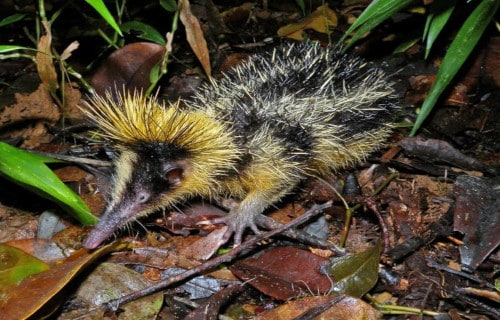
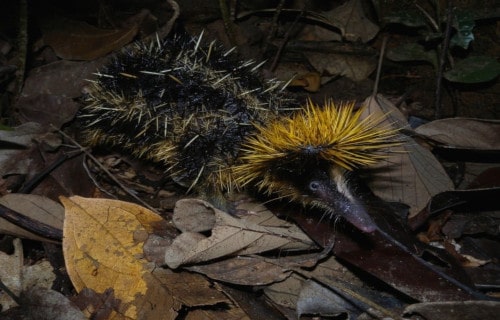
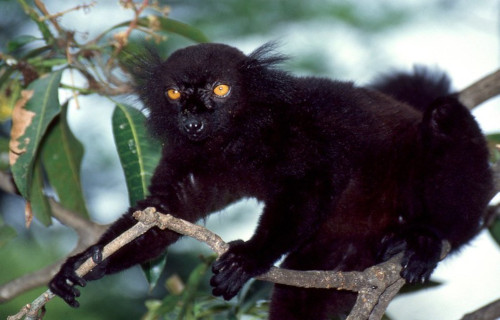
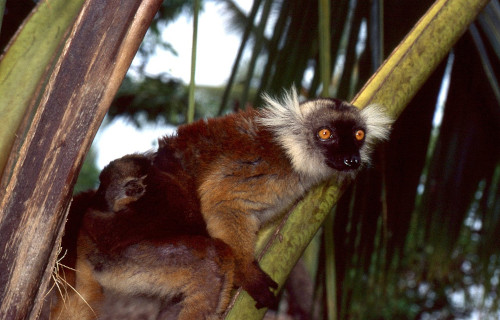


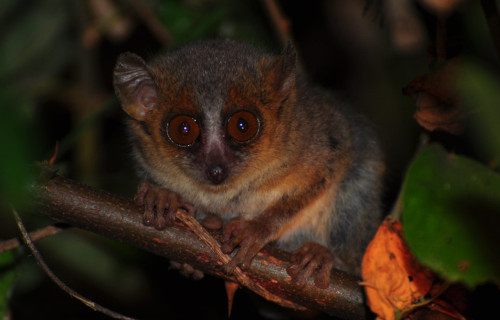
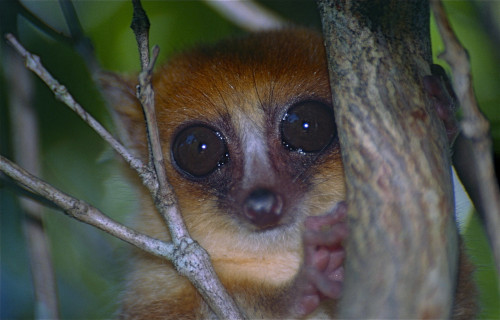
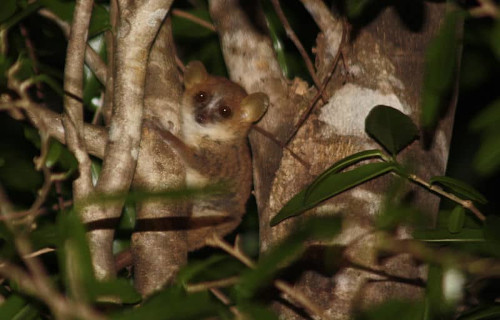









Leave a Reply